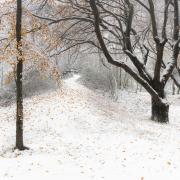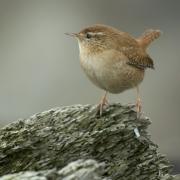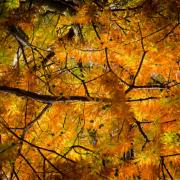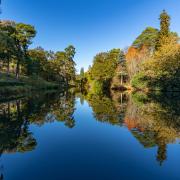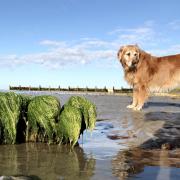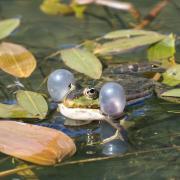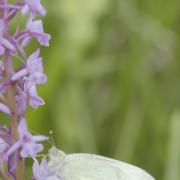The priest, author, broadcaster and ecologist considers the season of hibernation, and the mysteries held in the county’s 18,000 ponds
November is a liminal month, a time in between. It marks the beginning of hibernation. The dormouse, which is now sadly only found in three sites in Sussex, makes a winter nest of grass and leaves. The hedgehog, the gardener’s friend, isn’t quite so tidy: it’s bed might be a more ramshackle pile of leaves under a shed or the back of the woodpile. Bats slide into some small space to sleep out the winter, butterflies close their wings and the wonderful bumble bee burrows into the earth. Grass snakes, adders and slow worms have one of the longest hibernations – they bed down in October and don’t really emerge again until late March or early April. Ponds also quieten: frogs, toads and newts all hibernate and life within the pond sinks and slows.
There are reckoned to be more than 400,000 ponds in the UK and about 18,000 of them are in Sussex. I have always thought of ponds as keepers of secrets. There is still no real agreement about what constitutes a pond. Some argue that it is the size of the body of water whilst others insist that a pond can be defined by depth, that a pond is a body of water where light penetrates down to the bottom, fostering weed and all the life that depends on richly oxygenated water. To confuse matters still further there are many different types of ponds: mill ponds, stew ponds (usually found around the big houses and monasteries to provide a ready supply of fresh fish for the table); vernal ponds whichy dry out in the summer. Many of the ponds up on the Weald are hammer and furnace ponds. These were formed by damming streams flowing through wooded valleys to provide a steady flow of water to work the wheels of the iron smelting industry which thrived during the 16th and 17th centuries. And up on the Downs a few round dew ponds remain, which originally would have been lined with clay to collect and hold water for sheep and cattle.
More: 4 of the best National Trust gardens for autumn colour
Many ponds, especially village ponds, have been dug by hand. This was not only to provide water for livestock but also to wash the working horses. Many village ponds are not actually that deep and over the years they become shallower still with the build up of silt and rotting vegetation. In this country the village pond has perhaps become more of a symbol, somewhere to feed the ducks as its working purpose has faded with time and apparent progress. But in India several years ago I was present at a festival where we all threw cow dung at each other and when we were all completely covered in it the entire village took to the village pond to wash.
T S Eliot called this month ‘Sombre November.’ It is a thin sobriquet. November is the quietening month, it is a time of settling before the deep dive of winter. Maybe he never sat on the banks of a wooded pond, on a blue November day with the leaves on the leaning trees mottling the surface with yellows and golds. When the full silence of autumn holds court.
Join the conversation on our Facebook, Twitter and Instagram pages











